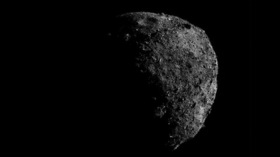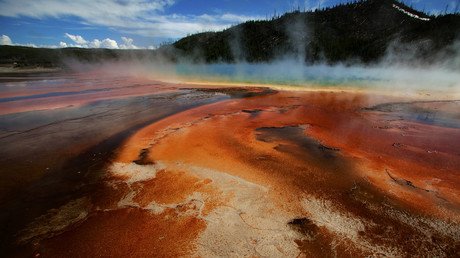NASA baffled by mysterious, unexplained ejections on asteroid Bennu

OSIRIS-REx, the NASA spacecraft analysing the asteroid Bennu, has made a remarkable discovery which upends our existing knowledge of space rock behavior and environment by blasting out inexplicable plumes of dust.
The never-before-seen phenomenon was first noticed in January and has since been documented at least 11 times.
Some of the dust expelled was blown out into the void of space but the remainder was actually captured within Bennu's orbit, falling back down and resting on the asteroid's surface.
My team is also using navigation tools to help track and study the material Bennu is ejecting from its surface. This composite image from NavCam 1 shows the trajectories of particles released Jan. 19 (green arrows) and background stars (yellow diamonds). #BennuRevealed#LPSC2019pic.twitter.com/71tce1pyoE
— NASA's OSIRIS-REx (@OSIRISREx) March 19, 2019
Curiously, however, at least four larger chunks of debris have remained in orbit around Bennu, potentially forming micro moons.
READ MORE: 'This is a great surprise’: NASA’s OSIRIS-REx has already discovered WATER on Bennu
At the moment, the eruptions pose more questions than the OSIRIS-REx team have answers. The origin of these plumes and what exactly triggers them remains a mystery.
Another surprise Bennu served up: plumes of particles erupting from the asteroid’s surface. In fact, my NavCam 1 imager captured the first-ever close-up observations of material being released from an “active asteroid.” https://t.co/1KYao07NUF#BennuRevealed#LPSC2019pic.twitter.com/MRtlz2mkSg
— NASA's OSIRIS-REx (@OSIRISREx) March 19, 2019
“The discovery of [the] plumes is one of the biggest surprises of my scientific career,” said principal investigator Dante Lauretta of the University of Arizona.
The OSIRIS-REx probe arrived in Bennu orbit in December 2018 to study the rock for additional information about the origins of the universe. It is due to collect a rock sample using its extendable arm but the sampling is proving more difficult than anticipated due to the amount of larger boulders on the surface.
A smaller sample site footprint will require my descent to Bennu’s surface during the touch-and-go sampling maneuver (TAG) to be more accurate than originally planned. My team is developing an updated approach, called Bullseye TAG, to target smaller sample sites.🎯 #BennuRevealedpic.twitter.com/OCRoIT5LbS
— NASA's OSIRIS-REx (@OSIRISREx) March 19, 2019
To safely collect a sample, my original mission design called for a hazard-free area with an 82-ft (25 m) radius. With so many boulders on Bennu, I'll need to target a much smaller area – about the size of the loose material "pond" in the upper left of this image. #BennuRevealedpic.twitter.com/qc6yPT0tw5
— NASA's OSIRIS-REx (@OSIRISREx) March 19, 2019
Think your friends would be interested? Share this story!














